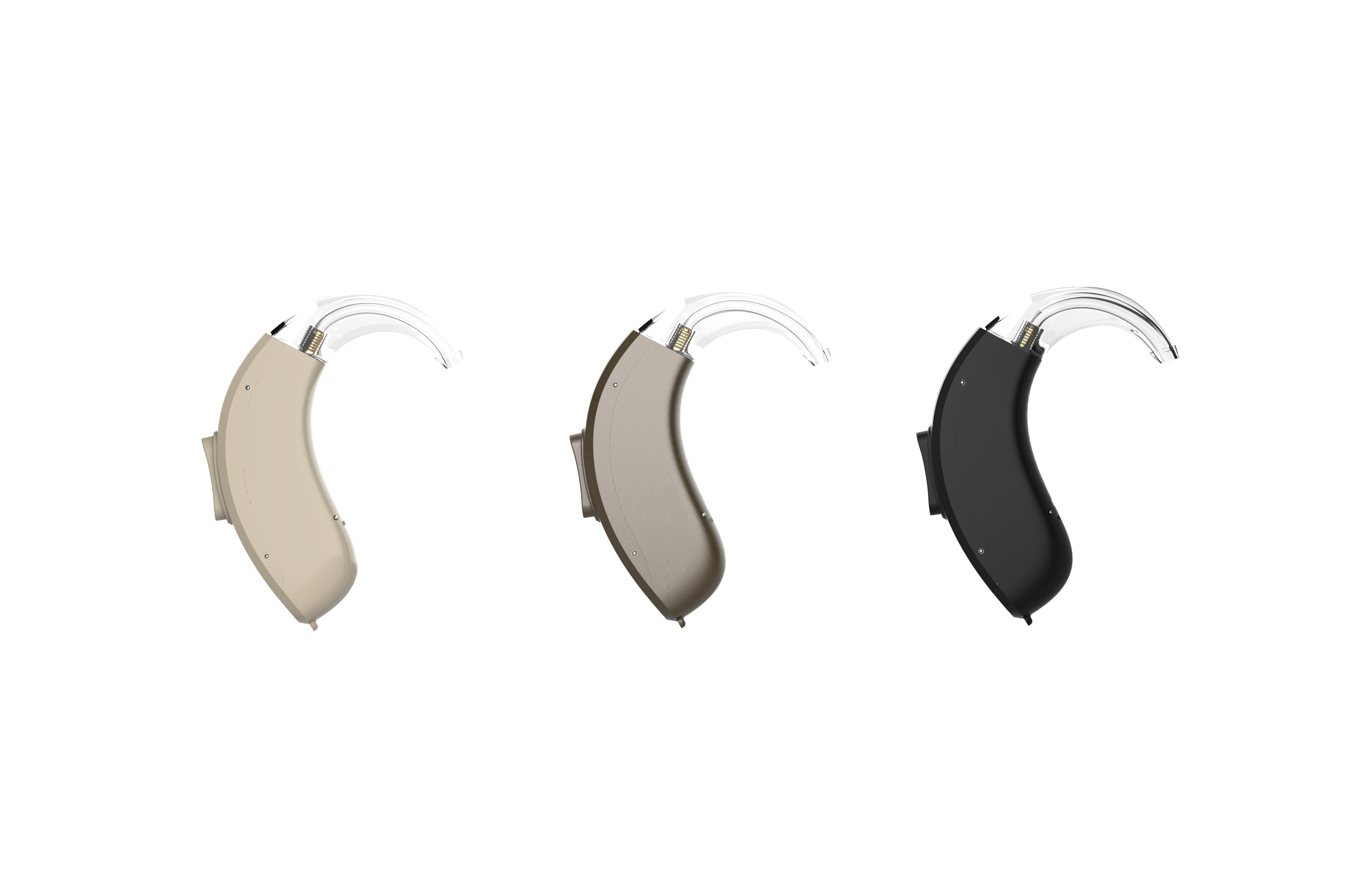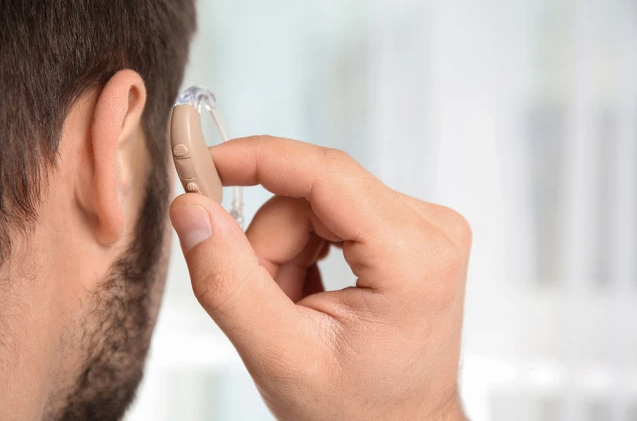So, I got diagnosed with hearing loss, and I have been told that I am a candidate for hearing aids, but there are so many hearing aid options out on the market. How would I know how to pick or select the correct hearing aids for myself? Let's discuss some factors that can affect your hearing aid selection process.
Style of Hearing Aids
There are two different big styles of hearing aid nowadays. They are Behind-the-Ear style, or we abbreviate it as the BTE style, and there is also the Custom style of hearing aids. Under the BTE style category, we can even classify it into the Receiver-in-the-Canal hearing aids, or the RICs, and the traditional BTE style. Under the Custom style category depending on the size of the custom hearing aids, we can have the In-the-Ear (ITE), In-the-Canal (ITC), Completely-in-the-Canal (CIC), and Invisible in the Canal (IIC) hearing aids.
Generally speaking, the style of the hearing aids does not have a massive effect on the price of the hearing aids. This is because a hearing aid is a hearing aid; it does not matter what style it is; however, there are pros and cons regarding the two different hearing aid styles. Here are some of the factors that you should consider when you are deciding which type of hearing aid suits you the best.
Age cognition when choosing hearing aids
typically speaking, the custom hearing aid is the easier style of hearing aid for elderlies, this is because a custom hearing aid is a custom made for one's ears. The right hearing aid won't even fit into the left ear, and the left hearing aid won't fit into the right ear. In other words, a custom hearing aid is like a piece of a puzzle; it only fits into one ear and in one way.

Secondly, putting a behind-the-ear (BTE) style of hearing aid into the ear usually requires two steps. One needs the patient to hang the hearing aid onto the ear, and two insert the receiver or the ear mold into the ear. On the other hand, a custom hearing aid typically only requires one single step since inserting a custom hearing aid into the ear is like matching up a piece of a puzzle; as mentioned, it only goes into the ear one way.

If you are selecting hearing aids for children, the typical style of hearing aid for children is the traditional behind-the-ear (BTE) style, and this is because children are constantly growing, and this includes their ears. Traditional BTE style hearing aids would require the patient to wear an ear mold in their ear, with a tube connecting to the body of the hearing aid. As the children grow over time, we can just simply change the ear mold itself, without getting a new hearing aid for the child each time when they change the ear mold. It is always cheaper to change the ear mold itself than change the hearing aid.
Additionally, the child is still at the essential stage of learning language and receiving education, additional hearing aid accessories might be needed for a child to receive the maximum benefits from their hearing aids, especially in a classroom setting. The BTE style of hearing aids has more flexibility and provides more connectivity opportunities for the patient.
Dexterity
If a hearing aid candidate has poor finger dexterity, such as an elderly, rechargeable hearing aid is the better option. This is because no change in the battery is needed. Additionally, with rechargeable hearing aids, the patient needs to insert and / or remove the hearing aids from the charger to turn the hearing aids on and off. With traditional battery hearing aids, turning the hearing aids on and off would require one to open and close the battery door, which could be challenging for someone with poor dexterity.

Vision condition
Generally speaking, custom hearing aids are more visible compared to the behind-the-ear (BTE) style, especially compared to the RIC style. When selecting hearing aids, especially for elderlies, for better visibility custom hearing aids, such as ITE and ITC are the better options. For the BTE style, the traditional BTE style with an ear mold has better visibility compared to the RIC style.
Your Lifestyle
Your lifestyle is an essential factor when you are selecting your hearing aids, and this factor would most likely affect how much you pay for your hearing aids. Buying hearing aids is just like buying anything else in life; they all come with different levels of technology. The higher the technology level you go, the more bells & whistles or fancy features you would get, and the more your hearing aids can do, and the less you need to do.
The lower the technology level you go, you would slowly lose those fancy features. Correspondingly, the higher the technology level, the more expensive the hearing aids would be, and the lower the technology level, the cheaper the hearing aids would be. The general rule of thumb if you are retired, at home most of the time, having more one-to-one conversations, and not in a whole lot of background noise, then basic level technology of hearing aids could be enough for you.
If you are still working or in school studying, very active, and the level of background noise fluctuates, then you would like to pick the premium level of hearing aids, so the hearing aids can do more for you, such as reducing more background noises. Therefore you can spend less energy on hearing, and spend more energy on what's more important to you.
Of course, if your lifestyle is somewhere in between, such as going out only several times a week, involve in some small group activities, and in some background noises, then the mid-level technology of hearing aids would be sufficient for your needs. Remember, regardless of what level of technology hearing aids you picked, they all reduce background noises, and they all function automatically.
The Severity of Your Hearing Loss
Typically speaking, the more hearing loss one has, the bigger the hearing aids would need to be. This is because the more hearing loss that you have, the more power that your hearing aids need to provide to compensate for the hearing loss, and the more power the hearing aids need to provide the bigger the battery size. In addition, the more the severity of the hearing loss, the more likely one would need to wear an ear mold. This is because with an ear mold, we can keep one's ear sealed to keep the amplified sounds in the ear as much as possible.
In conclusion, there are many factors that one needs to consider when selecting hearing aids, and factors that are important for one might not be as crucial for another; therefore, the process of hearing aid selection varies from patient to patient. Lastly, you, the patient, and / or the family of the patient are never alone throughout this process, and your hearing professionals are always by your side to guide you to select the best hearing aid that would suit your needs and any additional follow-up services that you need regarding your hearing aids and hearing loss. Remember, this will always take a teamwork effort between you and your hearing health professional; you are never alone!

Buying Hearing Aids Over the Counter
Yes, you can buy hearing aids over the counter; however, be careful what you are buying. Not all over-the-counter hearing assistive devices are hearing aids; some of them might be amplifiers. Compared to hearing aids, amplifiers amplify all sounds in the environment, both speech, and background noises. Most hearing aids nowadays are digital, meaning they are programmable and only amplify the sounds or pitches in which you have hearing loss. Additionally, over-the-counter hearing aids, most of the time, are mainly suitable for someone who has minimal or mild degrees of hearing loss. For anyone with a moderate or more severe amount of hearing loss, following up with a hearing health professional and getting fit with hearing aids are strongly recommended.

